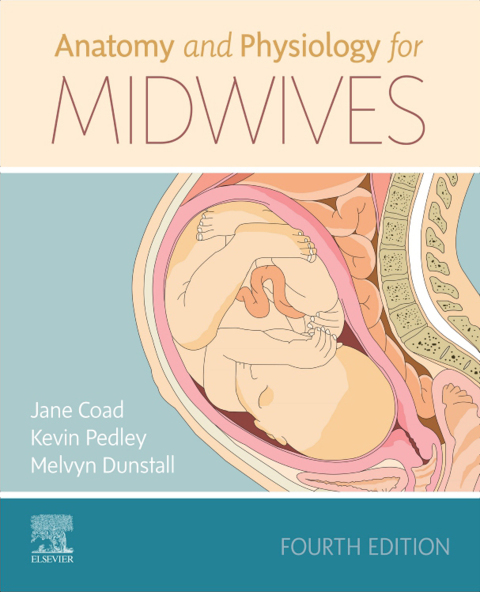Description
Efnisyfirlit
- Instructions for online access
- Cover image
- Title page
- Table of Contents
- Copyright
- Preface
- Acknowledgements
- List of abbreviations
- 1. Introduction to Physiology
- Introduction
- The Cell
- Cells and Tissues
- The Structural Organization of the Body
- Metabolism
- Key Points
- Application to Practice
- 2. The Reproductive and Urinary Systems
- Introduction
- The Urinary System
- The Female Reproductive Tract
- The Male Reproductive Tract
- Gametogenesis
- Key Points
- Application to Practice
- 3. Endocrinology
- Introduction
- What is endocrinology?
- The Evolution of Endocrinology
- Classification of Hormones
- Hormone Transport
- Hormonal Regulation
- Hormone Action
- Endocrine Glands, Hormones and Reproduction
- Fetal Endocrinology
- Key Points
- Application to Practice
- 4. Reproductive Cycles
- Introduction
- The Luteal Phase
- Regulation of Gonadotrophin Secretion
- Cyclical Effects of Oestrogens and Progesterone
- Menstruation
- Hormonal Causes of Infertility
- Artificial Control of Fertility
- Menopause
- Key Points
- Application to Practice
- 5. Sexual Differentiation and Behaviour
- Introduction
- Differentiation Into Male and Female
- Development of Male Morphology
- Development of Female Morphology
- Indeterminate Sex
- Sexual Behaviour
- Key Points
- Application to Practice
- 6. Fertilization
- Introduction
- Coitus (Copulation)
- The Gametes
- Stages of Fertilization
- Development Before Implantation
- Parental Imprinting
- Twins
- Implantation
- Maternal Recognition of the Pregnancy
- Causes of Infertility
- Assisted Reproductive Technology (Art or Artificial Fertilization)
- Key Points
- Application to Practice
- 7. Overview of Human Genetics and Genetic Disorders
- Introduction
- A Brief History of Genetics
- Genes and Chromosomes
- The Structure of DNA and RNA
- DNA Replication and Cell Division
- The Genetic Message
- Mutation
- Meiosis
- Autosomes and Sex Chromosomes
- Prediction of Genetic Outcomes
- Characteristics of Different Types of Inheritance
- Chromosomal Abnormalities
- Epigenetics and Imprinting
- Genetic Screening
- Evolution
- Key Points
- Application to Practice
- 8. The Placenta
- Introduction
- Uterine Receptivity
- Differentiation into Cytotrophoblast and Syncytiotrophoblast
- Extravillous Cytotrophoblast and Remodelling of the Uterine Vessels
- Vascularization of the Placental Villi
- Development of the Discoid Placenta and Chorionic Membrane
- Development of the Amnion (Inner Membrane)
- Growth and Maturation of the Placental Villi
- Placental Blood Flow
- Placental Transport Mechanisms
- Placental Hormone Production
- The Allantois and Yolk Sac
- The Placenta at Term
- Examination of the Placenta
- Key Points
- Application to Practice
- 9. Embryo Development and Fetal Growth
- Introduction
- Embryonic Week 2
- Embryonic Week 3
- Embryonic Weeks 4–8: Organogenesis
- Ninth Week to Birth: Fetal Period
- Development of Organ Systems
- Key Points
- Application to Practice
- 10. Overview of Immunology
- Introduction
- The Evolution of the Immune System
- Overview of the Immune System
- The Immune System in Pregnancy
- Acceptance of the Fetus
- Effects of Pregnancy on the Immune System
- Fetal and Neonatal Passive Immunity
- Vulnerability of the Neonate
- Other Immunological Aspects of Pregnancy
- Key Points
- Application to Practice
- 11. Physiological Adaptation to Pregnancy
- Introduction
- Endocrine Changes in Pregnancy
- The Reproductive System
- The Cardiovascular System
- The Respiratory System
- The Renal System
- The Gastrointestinal System
- The Skin and Appearance
- The Skeleton and Joints
- Vision
- The Nose and Larynx
- Sleep
- Carbohydrate Metabolism
- Key Points
- Application to Practice
- 12. Maternal Nutrition and Health
- Introduction
- Overview of Nutrition
- Preconceptual Nutritional Status
- Non-Nutritional Factors Affecting Reproductive Function
- Nutritional Requirements in Pregnancy
- Undernutrition in Pregnancy
- Maternal Obesity
- Lifestyle Issues
- Key Points
- Application to Practice
- 13. Physiology of Parturition
- Introduction
- Stages of Labour
- The Uterus at Term
- Initiation of Parturition
- The Timing of Parturition
- The Evolutionary Context of Human Labour
- The First Stage of Labour
- The Second Stage of Labour
- The Third Stage of Labour
- The Effects of Labour on Maternal Physiology
- Nutrition in Labour
- The Effects of Labour on the Fetus
- The Fetal Skull and Fetal Presentation
- Pain in Labour
- Position in Labour
- Key Points
- Application to Practice
- 14. The Puerperium
- Introduction
- Physiological and Structural Changes
- Lochia
- Sleep
- Psychological State
- The Role of the Midwife
- Complications of the Puerperium
- Key Points
- Application to Practice
- 15. The Transition to Neonatal Life
- Introduction
- The Cardiovascular System
- The Respiratory System
- Temperature Regulation
- The Neonatal Liver
- The Gastrointestinal System at Birth
- The Kidneys
- The Nervous System
- Sleep and Behavioural States
- The Skin and Immune System
- Normal Neonatal Transition
- Initial Examination of the Newborn
- Key Points
- Application to Practice
- 16. Lactation and Infant Nutrition
- Introduction
- Anatomy of the Breast
- Breast Growth and Development
- Physiology of Lactation
- Suckling and Milk Transfer
- Involution
- Problems Associated with Lactation
- Inhibition of Fertility
- Maternal Behaviour
- Nutrition of the Lactating Mother
- Infant Nutrition and the Composition of Human Milk
- Immunological Properties of Human Milk
- Formula Feeding
- Complementary Feeding (Weaning)
- Key Points
- Application to Practice
- Index






Reviews
There are no reviews yet.